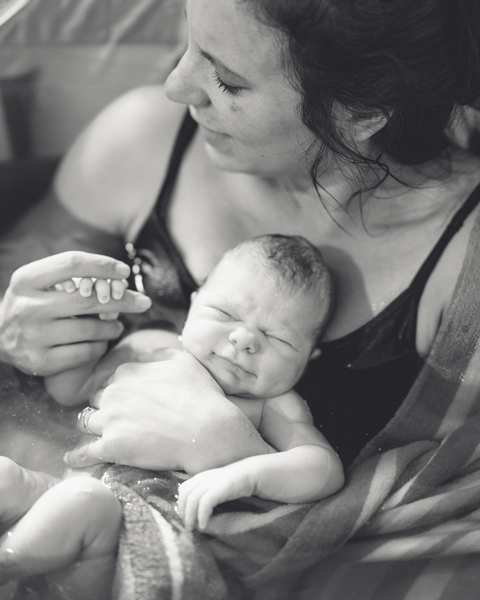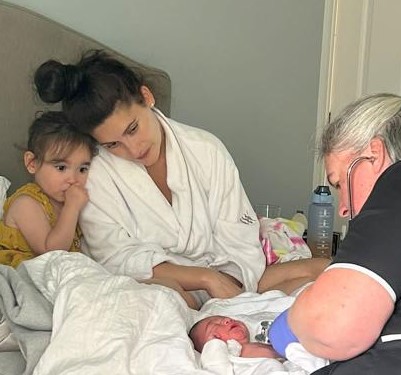
Hello, I'm Sarah, Your homebirth expert Midwife. I'm a Midwife of 15 years, specialising throughout in physiological birth, and now, together with Jenny, I work for families all across the Northwest to support them in their journey towards their ideal homebirth.
What is a VBAC?
VBAC stands for a Vaginal birth after a caesarean (c/s). The c/s rate in the UK is currently at an all-time high, of around 39% nationally. A successful VBAC, makes future pregnancies less complex and reduces the risk of birth for you and baby in those future births (RCOG, 2016).
The chances of a successful VBAC are high, even in a hospital setting – typically around 75% of VBACs will birth vaginally, and if you have EVER had a vaginal birth before, that increases to 90% chance of success (RCOG, 2016)
Birth after previous caesarean | RCOG
What are the recommendations?
NICE (2024) says to ‘offer women planning a vaginal birth who have had a previous caesarean birth:
· electronic fetal monitoring during labour [CTG]
· care during labour in a unit [hospital] where there is immediate access to caesarean birth and on-site blood transfusion services'
caesarean-birth-pdf-66142078788805 (nice.org.uk)
What is the worry?
The concern regarding a VBAC, or any scar on a uterus, is that the scar tissue doesn't stretch or contract like the rest of the uterine muscle. The stress on the scar could be such that it ruptures causing a life-threatening emergency for you and baby. The chances of this occurring are very small – around 99.5% chance it wont happen v. 0.5% that I could (RCOG, 2016). For Induced labours, around 99% chance it wont happen v. 1% chance that it could (RCOG, 2016).
Why birth at home after a caesarean section?
- What you perceive to be ‘safe' is different for everyone – being at home feels ‘safer' for some.
- A 2021 study of almost 5000 births, found that birthing at home rather than hospital after a c/s, increased the likelihood of a vaginal birth to 84.7%, reducing the chance of another c/s birth to 15.3%, with no significant difference in severe adverse outcomes in either area.


- At home you have a higher likelihood of being cared for by a Midwife that you know, either from an NHS homebirth continuity team or an Independent Midwife.
- All birth comes with the potential for iatrogenic harm. Iatrogenic harm is harm caused inadvertently by the treatment. In a hospital setting, just attending a hospital in labour; Being in an unfamiliar environment, meeting strangers, task focused care processes and restrictions on instinctive behaviour, can lead to iatrogenic harm by disrupting the hormone flow of labour. This in turn may increase the chance of requiring induction or acceleration, if labour is deemed ‘slow'. Birthing at home is a way of mitigating this as – for most – it is the ideal physiological environment for the hormones of labour to flow undisturbed.
- Access to the hospital remains open throughout the whole birthing process, should transfer be wanted or recommended.
Practicalities to consider for a VBAC?
Experience of the Midwife
An experienced Midwife will recognise when the pattern of contractions is persistently irregular, that pain is being experienced in between contractions or that early labour is lasting excessively long. These are all subtle signs that the scar on the uterus isn't allowing the regular rhythm and flow of surges that are effective in bringing about birth physiologically. Deciphering between normal physiological labour and all its nuance, and early signs of a uterus struggling with labour, takes experience, skill and expertise. Most Midwives regularly supporting homebirths will have this experience.

Declining CTG
A CTG – continuous monitoring of the fetal heart rate – is not available in a home setting. Intermittent auscultation (IA) using a doppler or pinard is the routine method of fetal heart monitoring at home. For a HBAC, only IA is available, therefore fetal heart monitoring options are limited.
There is no evidence that either IA or CTGs are more or less effective at detecting an issue with the uterine scar. The recommendation for CTG with a VBAC has no clinical evidence base.

Watching for early ‘Red Flags'
Your Midwife will offer to monitor your observations routinely in a HBAC, as with any other home birth, requesting to do them earlier if they notice:
- Atypical bleeding
- Atypical pain
- Atypical behaviour
- Confusion
- Altered consciousness
- Dizziness
- Anything concerning
As well as the above, altered observations can be a red flag that your uterus is struggling to coordinate and obstetric input may be appropriate.

Transfer time
As will all homebirths, access to obstetric support, should it be recommended, will be delayed to varying degrees based on where you live and where the nearest maternity hospital is based.
Again, the skill of the Midwife is to recognise ‘red flags' early where possible to get you to a hospital. Midwives are trained to manage all forms of emergency in a community setting and together with the ambulance service, get you and baby to hospital as quickly as possible.
Takeaway messages:
- VBAC has a high chance of success in all settings
- The highest success rates of VBAC are in the home setting
- Birthing at home means opting out of CTG and immediate access to obstetric input
- The chance of not having an issue with your scar rupturing is 99.5%
- We all have a unique perspective on what we deem safe – so keep reading, listening and learning, then make a choice that feels right for you.

Love this? Follow for more!
Now we've looked at homebirth and its benefits for the majority, over the next few blog posts I'll be exploring what individual health circumstances you may encounter that are ‘out of guideline' and how they can be considered in the context of homebirth.